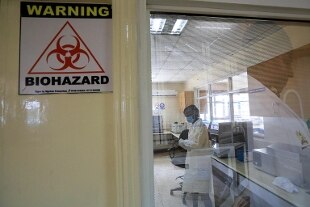Share
April 29, 2020 It is one of the many anomalies that Sars-Cov2 has put on display compared to other coronaviruses studied in the past: the fact that patients judged to have recovered then return later to positive tests. It had happened in Japan and Korea and then it also happened in Europe and Italy. Now just from Korea comes a news that if confirmed would be very, very reassuring.The virus is there but inactive
The fact that patients considered cured were again positive for the COVID-19 test could indicate that they still have virus fragments in their body, which however is inactive. This was stated by the Korean Centers for Disease Control and Prevention (KCDC), the South Korean scientific facility that deals with epidemics.
RNA fragments but it is a false positive
According to the KCDC, these cases do not indicate the risk that the virus in the recovered patients may have reactivated or there may have been a new infection. Apparently - according to them - they would be fragments of the virus that have remained inactive in the body, which are detected by diagnostic tests. "RNA fragments can still exist in a cell, even if the virus is inactive", the KCDC reported in a statement. "The most probable thing - they continued - is that those who are again positive test carried RNA of the virus that is now inactive".
277 cases in Korea alone
It has caused some alarm in South Korea that several people considered cured of the new coronavirus have tested positive again. To date, according to the news agency Yonhap, there are 277 such cases.
The Korean test
South Korea uses a polymerase chain reaction (PCR) test to diagnose the presence of the new coronavirus. intercept the genetic information contained in the RNA - ribonucleic acid - of the virus. The test is capable of detecting even small amounts of viral RNA in cells, even after the patient has recovered. "The COVID-19 virus does not invade the cell nucleus by combining with the patient's DNA," said Oh Myoung-don , head of the South Korean scientific committee. "This means - he continued - that the virus does not create a chronic infection". Furthermore, it does not appear that it can remain dormant in the cell nucleus, again according to Oh.

